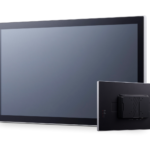In industries where physical labor and mechanical operations are the norm, safeguarding workers from potential hazards is crucial. One of the most vulnerable parts of the human body in such environments is the eyes. A well-organized industrial eyes safety eyewear program helps companies mitigate risks and ensure the safety and well-being of their employees. This article delves deep into various aspects of industrial eye safety programs, including the types of eyewear used, costs involved, and the challenges industries face in implementing such safety measures.
What is an Industrial Eyes Safety Eyewear Program?
An industrial eyes safety eyewear program is a systematic approach to ensuring that workers who are exposed to potential eye hazards are adequately protected. This involves not only providing the correct safety eyewear but also educating workers on the importance of consistent use and proper maintenance. These programs are designed to reduce the number of eye-related injuries in the workplace, improve overall safety, and comply with government safety regulations.
The Importance of Industrial Eye Protection
In industrial environments, workers face numerous risks such as flying debris, chemical splashes, and hazardous light exposure. Industrial eye protection is essential to guard against these dangers, preventing severe injuries, and, in some cases, permanent blindness. Implementing an industrial eye safety program ensures that employees have the correct protective equipment tailored to the specific risks they face.
Key Components of an Industrial Safety Eyewear Program
An effective safety eyewear program should cover several key areas:
- Risk Assessment – Identifying the types of hazards present in the workplace.
- Selection of Safety Eyewear – Choosing the appropriate safety goggles or glasses based on the risks.
- Training and Education – Teaching employees the importance of wearing eyewear and how to maintain it.
- Compliance Monitoring – Ensuring that employees follow safety protocols.
Types of Industrial Safety Eyewear
Industrial Prescription Safety Eyewear
For workers who require corrective lenses, industrial prescription safety eyewear is a must. These safety glasses are specifically designed to not only protect the eyes but also correct vision. They are compliant with ANSI standards, ensuring both clarity and protection.
Industrial Safety Goggles
Safety goggles provide a sealed level of protection, which is crucial in environments where exposure to chemicals or dust is high. Unlike safety glasses, goggles offer a snug fit around the eyes, preventing particles or liquids from entering.
Face Shields
In some cases, particularly when workers are exposed to larger debris or intense heat, face shields are used. They are designed to protect not only the eyes but the entire face from harm.
Benefits of a Strong Industrial Eyes Safety Program
An organized industrial safety eyewear program provides several benefits, including:
- Reduction in Workplace Injuries – Fewer eye injuries mean fewer medical expenses and compensation claims.
- Increased Employee Morale – Workers feel more secure knowing that their safety is a priority.
- Improved Compliance – Companies that adhere to safety regulations avoid costly fines and penalties.
Challenges in Implementing an Industrial Safety Eyewear Program
While the benefits are clear, there are some challenges that industries face when implementing a safety eyewear program. These include:
- Employee Compliance – Some workers may resist wearing safety eyewear, citing discomfort or hindrance to their work.
- Cost of Implementation – High-quality safety eyewear, especially prescription variants, can be costly for employers.
- Maintaining Equipment – Regular inspection and replacement of damaged or worn-out eyewear can be time-consuming.
Industrial Eyes Safety Eyewear Program Costs
The cost of an industrial safety eyewear program depends on several factors, including the size of the workforce, the types of eyewear required, and the frequency of replacements. On average, companies can expect to spend between $50 and $150 per worker annually for standard safety glasses, while prescription safety eyewear can range from $200 to $500.
The Future of Industrial Eye Protection
With advancements in technology, the future of industrial eye protection is promising. Innovations such as anti-fog coatings, enhanced comfort designs, and smart glasses that monitor a worker’s environment in real-time are becoming more prevalent. These advancements will not only make eye protection more effective but also more appealing to workers, increasing compliance rates.
FAQs
What is the importance of an industrial safety eyewear program?
An industrial safety eyewear program ensures that workers are protected from eye-related injuries, which can be severe and even result in permanent vision loss.
How often should industrial safety eyewear be replaced?
Safety eyewear should be inspected regularly for damage and replaced immediately if any signs of wear or tear are found.
Are prescription safety glasses necessary for workers who wear glasses?
Yes, workers who require corrective lenses need prescription safety glasses to ensure they receive both vision correction and eye protection.
What types of industries require an eye safety program?
Industries such as construction, manufacturing, chemical processing, and metalworking require robust eye safety programs due to the high risk of eye injuries.
Can industrial safety goggles protect against all hazards?
No,
protect against specific hazards like flying debris or chemical splashes. Additional protection, such as face shields, may be required for more severe risks.
How much does an industrial safety eyewear program cost?
Costs vary based on factors like eyewear type and workforce size, but companies typically spend between $50 and $500 per employee annually.
Conclusion
Implementing an industrial eyes safety eyewear program is an essential step for any company that values the health and well-being of its workers. By selecting the right protective eyewear, providing proper training, and ensuring compliance, companies can significantly reduce the number of workplace injuries and create a safer environment for their employees.
ALso Read: Guide to Car Locksmiths in Birmingham




